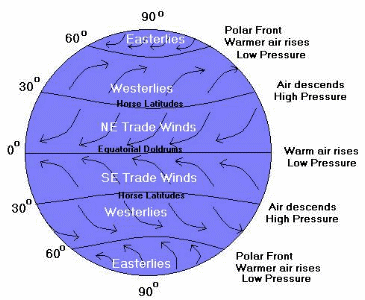 Angled light rays are weaker rays that their paths are changed because of clouds and also being reflected off of Earth. However, straight light rays are stronger and they make places warmer. What I learned from the "Global Wind Patterns" activity is that light rays are affected due to clouds and the Earth reflecting light.
Angled light rays are weaker rays that their paths are changed because of clouds and also being reflected off of Earth. However, straight light rays are stronger and they make places warmer. What I learned from the "Global Wind Patterns" activity is that light rays are affected due to clouds and the Earth reflecting light.
Earth's rotation affects the movement of air and water masses. This happens because of the Coriolis affect. The Coriolis affect is the deflection of moving objects. We did an activity where we placed water on a spinner and as it spun, the water spun off the paper and made a spiral design. It showed me that the Coriolis affect makes the water displace to different locations.

Global wind patterns are divided into several sections. Polar easterlies are at about 60-90 degrees, and they blow irregularly from the east and the north. Westerlies are at about 30-60 degrees and they blow from the north and from the west. Horse Latitudes are where the westerlies meet trade winds at about 30 degrees. This region has a lot of high pressure and it is extra dry. Lastly, trade winds are about 30 degrees south and they blow from the northeast towards the equator.
No comments:
Post a Comment